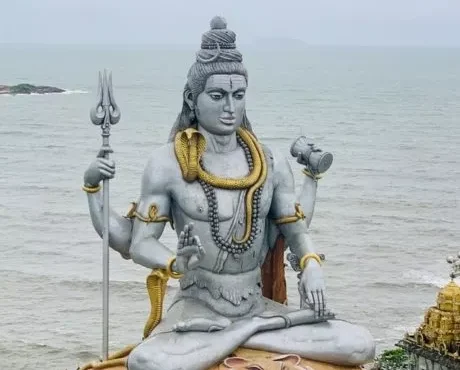Contenus
ToggleIn short
Maha Shivaratri (IAST: Mahāśivarātri) is a Hindu festival celebrated annually in honor of the god Shiva. The name also refers to the night when Shiva performs the celestial dance called Tandava. Each month of the lunisolar Hindu calendar, there is a Shivaratri – “night of Shiva” – on the eve of the new moon. But once a year, at the end of winter and before the arrival of summer (February/March), this night is called “Maha Shivaratri” – “the Great Night of Shiva”. This day falls in the month of Phalguna according to the North Indian Hindu calendar and in Magha according to the South Indian Hindu calendar (see Amanta and Purnimanta systems).

Maha Shivaratri, day of Shiva
Maha Shivaratri is an annual festival dedicated to the Hindu god Shiva, and is particularly important in the Shaivist tradition of Hinduism. Unlike most Hindu festivals which are celebrated during the day, Maha Shivaratri is celebrated at night. Additionally, unlike most Hindu festivals which include expressions of cultural revelry, Maha Shivaratri is a solemn event notable for its introspective focus, fasting, meditation on Shiva, personal study, social harmony and vigil. night in the temples of Shiva.
The celebration includes maintaining a 'jaagaran', an all-night vigil and prayers, as Shaiva Hindus mark this night as "overcoming darkness and ignorance" in one's life and in the world through Shiva. Offerings of fruits, leaves, sweets and milk are made to Shiva, some fast all day with Vedic or tantric worship of Shiva, and some practice meditative yoga. In Shiva temples, “Om Namah Shivaya”, the sacred Panchakshari mantra of Shiva, is chanted throughout the day. Devotees praise Shiva through the recitation of Shiv Chalisa.
Maha Shivaratri is celebrated over three or ten days according to the Hindu lunisolar calendar. Every lunar month there is a Shivaratri (12 per year). The main festival is called Maha Shivaratri, or great Shivaratri, which takes place on the 13th night (waning moon) and 14th day of the Phalguna month. In the Gregorian calendar, the day falls in February or March.
Maha Shivaratri is mentioned in several Puranas, particularly the Skanda Purana, the Linga Purana and the Padma Purana. These Shaiva texts from medieval times present different versions associated with this festival and mention fasting, respecting Shiva icons such as the Lingam.
Different legends describe the meaning of Maha Shivaratri. According to one legend of Shaivist tradition, it is the night when Shiva performs the celestial dance of creation, preservation and destruction. The singing of hymns, the reading of Shiva's scriptures and the chorus of devotees join this cosmic dance and recall the presence of Shiva everywhere. According to another legend, this is the night when Shiva and Parvati got married. A different legend states that offering to Shiva icons such as the linga is an annual opportunity to overcome past sins if any, restart on a virtuous path and thus attain Mount Kailasha and liberation.
The importance of the dance tradition to this festival has historical roots. Maha Shivaratri has served as a historic confluence of performers for annual dance festivals at major Hindu temples such as Konark, Khajuraho, Pattadakal, Modhera and Chidambaram. This event is called Natyanjali, literally "worship through dance", at the Chidambaram temple which is famous for its sculpture depicting all the dance mudras in the ancient Hindu performing arts text called Natya Shastra. Similarly, at the Khajuraho Shiva temples, a large fair and dance festival on Maha Shivaratri, involving Shaiva pilgrims camping for miles around the temple complex, was documented by Alexander Cunningham in 1864.
Social networks
celebrate Maha Shivaratri in honor of Shiva. This day marks the night when Shiva performed the sacred Tandava dance. This day of Shiva (at each new moon) is very special because the festival takes place at night and not during the day. #mythology #myth #legend #calendar #shiva 1TP5Hinduism #maha
Picture
